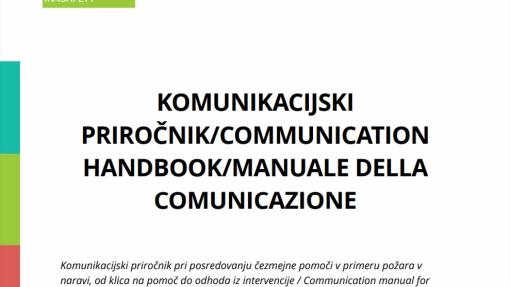As part of the IN4SAFETY project, three joint training programmes have been developed to strengthen cross-border cooperation in natural disaster response: a programme on managing cross-border emergency interventions, a programme on the use and maintenance of WEBGIS systems, and a specialised communication training programme featuring a handbook of common phrases in Italian and Slovenian.
The training programmes were designed based on lessons learned and needs identified during previous cooperation among rescue services in the programme area. Through this joint training plan, the project aims to enhance the readiness and efficiency of protection and rescue units and improve their coordination during joint cross-border operations.
A special focus was placed on the handbook for cross-border communication, developed in cooperation with experienced firefighters, civil protection experts, and linguists. The handbook was created through practical language training sessions, where participants identified the most useful expressions and commands used during real-life interventions. In addition to Italian and Slovenian, the handbook also includes English phrases, further facilitating communication with international teams.
The handbook proved to be an invaluable tool during both training sessions and practical exercises. Its usefulness was confirmed during a large-scale cross-border exercise held from 5 to 8 June 2025, involving over 600 members of protection and rescue services from Italy and Slovenia, as well as teams from Croatia and the German city of Chemnitz, this year’s European Capital of Culture. During the exercise, participants practiced real-time communication using the handbook, which further demonstrated its value in ensuring effective and safe cross-border cooperation.
With these joint training programmes and multilingual tools such as the handbook, the IN4SAFETY project makes a significant contribution to enhancing preparedness, competence, and coordination among cross-border rescue teams, while also strengthening the safety and resilience of border-region communities.
HANDBOOK

